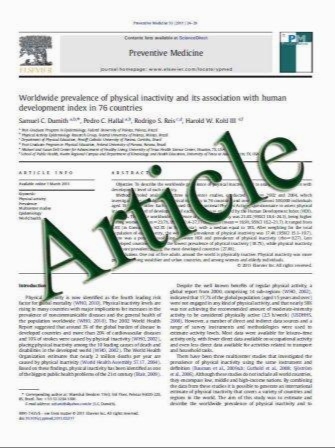Associations of APOE gene polymorphisms with bone mineral density and fracture risk: a meta-analysis
- نوع فایل : کتاب
- زبان : انگلیسی
- مؤلف : I. Peter & M. D. Crosier & M. Yoshida & S. L. Booth & L. A. Cupples & B. Dawson-Hughes & D. Karasik & D. P. Kiel & J. M. Ordovas & T. A. Trikalinos
- چاپ و سال / کشور: 2010
Description
Summary To determine the association of the Apolipoprotein E (APOE) E4 gene polymorphism with bone mineral density (BMD) and fractures we conducted a meta-analysis of 17 reports. Despite lower trochanteric and lumbar BMD in APOE4 carriers, there is insufficient evidence to support a consistent association of APOE with bone health. Introduction APOE has been studied for its potential role in osteoporosis risk. It is hypothesized that genetic variation at APOE locus, known as E2, E3, and E4, may modulate BMD through its effects on lipoproteins and vitamin K transport. The purpose of this study was to determine the association of the APOE-E4 gene polymorphism with bonerelated phenotypes. Methods We conducted a meta-analysis that combined newly analyzed individual data from two communitybased cohorts, the Framingham Offspring Study (N= 1,495) and the vitamin K clinical trial (N=377), with 15 other eligible published reports. Bone phenotypes included BMD measurements of the hip (total hip and trochanteric and femoral neck sites) and lumbar spine (from the L2 to L4 vertebrae) and prevalence or incidence of vertebral, hip, and other fractures. Results In sex-pooled analyses, APOE4 carriers had anon carriers (p=0.0002) with no evidence for betweenstudy heterogeneity. A significant association was also detected with lumbar spine BMD (p=0.006); however, inter-study heterogeneity was observed. Associations with lumbar spine and trochanteric BMD were observed predominantly in women and became less significant in metaregression (p=0.055 and 0.01, respectively). There were no consistent associations of APOE4 genotype with BMD at other skeletal sites or with fracture risk. Conclusions Based on these findings, there is insufficient evidence to support a strong and consistent association of the APOE genotype with BMD and fracture incidence. 0.018 g/cm2 lower weighted mean trochanteric BMD than
Osteoporos Int (2011) 22:1199–1209 DOI 10.1007/s00198-010-1311-5 Received: 12 March 2010 / Accepted: 3 May 2010 / Published online: 9 June 2010


